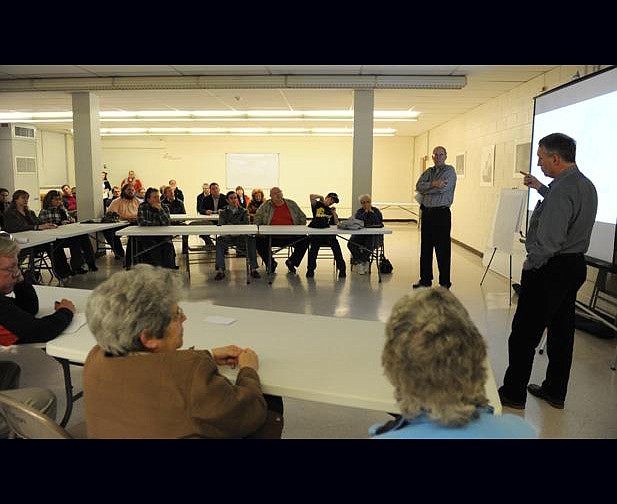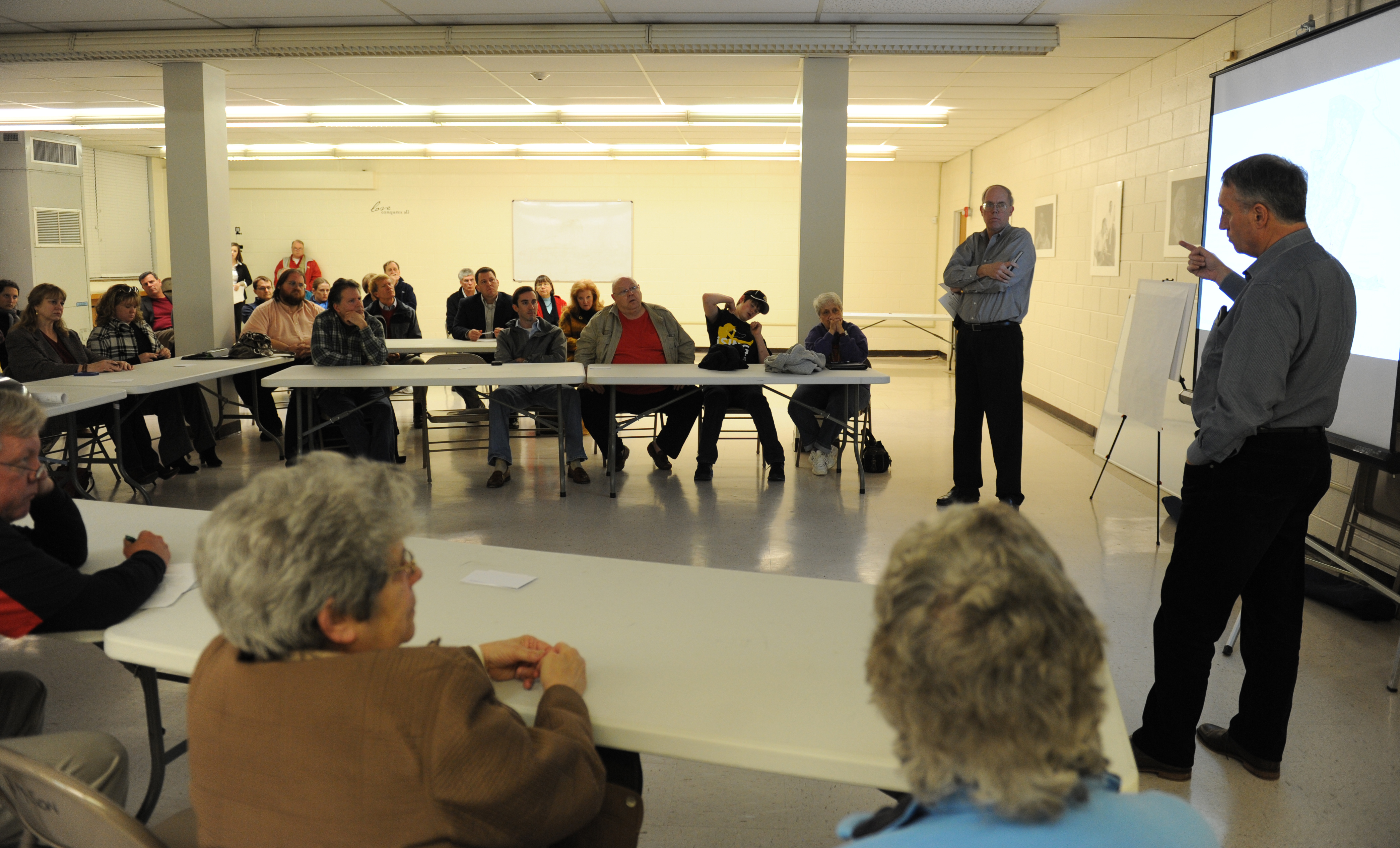CHATTANOOGA VILLAGE TIMELINE* 1991: Highway 153 site listed for sale. Crown America proposes shopping center on the scale of Hamilton Place mall, but the project dies.* 2002: Developer Tom DuPre offers a smaller commercial project, but it too doesn't come to fruition.* 2007: Hixson United Methodist Church options land, but decides against buying the site.* October 2011: Duane Horton's Scenic Land Co. proposes $100 million apartment and commercial project dubbed Chattanooga Village.* April 2012: City planners recommend blocking development.* May: Horton withdraws application seeking City Council approval.* November: Horton files revamped proposal with planners.* December: Planning Commission OK's new plan at urging of Mayor Ron Littlefield.* Jan. 8: City Council defers action on proposal.* Jan. 22: Council denies Chattanooga Village rezoning.
It started nearly a year and a half ago with a simple and pleasant-enough name: Chattanooga Village.
But the huge Hixson proposal turned into a lightning rod, sparking almost two dozen sometimes-tense public meetings and becoming one of the most time-consuming and costly city rezoning cases in years.
Ultimately, the fight over the $100 million plan engulfed two of city's most prestigious law firms, a pair of public relations companies and Mayor Ron Littlefield, and it split the City Council and stirred the passions of scores of Hixson residents.
"Everybody invested a lot," said John Bridger, who directs the Chattanooga-Hamilton County Regional Planning Agency, and whose own staff struggled over the complex proposal.
The City Council turned down the project last month in a 5-3 vote.
In Chattanooga Village, developer Duane Horton and landowner Jack Lonas offered one of the biggest developments of its kind ever in the city. They pledged to bring new residents, retailers and office clients to Hixson and an estimated $2 million in annual tax revenues to the city.
One of the last undeveloped tracts off state Highway 153 in Hixson, the 190-acre, hilly parcel could hold up to 280 apartments and 763,320 square feet of commercial space, Horton said. That's about equal to another Northgate Mall a couple of miles away.
However, the property adjoins several neighborhoods, and some of the residents created an opposition group called Don't Chop the Hilltop.
Horton wouldn't say how much was spent on the Chattanooga Village proposal and the effort to gain rezoning, though he said the cost was "significant." Lonas, who bankrolled the venture, didn't return phone calls.
Horton brought in internationally known design firm Hart Howerton of Minneapolis to develop and help sell the plan. Also, attorney Sam Elliott, of the Chattanooga law firm Gearhiser Peters Elliott & Cannon, joined in as Horton's Scenic Land Co. negotiated with critics over conditions to his proposal.
Big project
Elliott said the case wasn't typical because of its size and the number of conditions attached or proposed. He said planners approved 25 conditions while critics proposed 17 more and wanted to revise others.
Elliott said opponents tried to use the conditions as a club to defeat the project by making it "so onerous so it wasn't practical to build."
Meanwhile, the North Chickamauga Creek Conservancy had environmental and other concerns about the project and hired attorney Joe Conner of Baker Donelson.
Conner said so much time and money was focused on Chattanooga Village because it wasn't a standard zoning case.
"It's not every day you get a 190-acre mixed-use development," he said.
Conner said he spent considerable hours on the project.
"We were very much engaged," Conner said. "You have to do that to make the point you need to make."
Gregory Vickrey, the conservancy's executive director, said his group spent "north of $25,000" plus a lot of its own staff time on the Chattanooga Village battle. He said "citizens had to be involved to get a sound and reasonable decision."
As the proposal wound its way through the public process -- it's estimated it underwent about a half-dozen iterations -- both sides hired public relations groups.
Robin Derryberry said her firm, Derryberry Public Relations, was brought in around Thanksgiving to support Chattanooga Village. She declined to say how much the firm was paid.
"The stakes were high," Derryberry said. "You have a landowner who wanted to provide something that would be of lasting significance for the community."
She said her firm focused on providing factual information to decision makers to counter "a lot of misinformation that became fact."
The other side hired Waterhouse Public Relations last spring, said Albert Waterhouse, the company's chief.
Waterhouse wouldn't discuss how much time his firm spent on the issue or how much it was paid.
"We put in the adequate resources to have a successful outcome," he said.
Waterhouse's firm worked with residents and with Northgate Mall owner CBL & Associates Properties Inc. He helped CBL executive Michael Lebovitz meet with some City Council members to make the case that there's already a lot of empty commercial space in Hixson.
"We felt like some of the information ... was not getting to all the parties involved in the way it needed to," Waterhouse said.
Bridger said Chattanooga Village's implications were greater than a typical zoning case for the community because of the project's size.
"Clearly there were a lot of pros and cons the community identified because of the scale of the project," he said.
Future cases
Bridger said there ought to be a fresh look at how the city reviews proposed developments, particularly large ones such as Chattanooga Village.
"Once we're through the [city] election cycle, that's something that needs to be focused on over the next couple of years," he said.
Bridger said he's thinking about a two-stage process, particularly on large-scale projects: getting the zoning and standards right and then conducting site review process, he said.
"Right now, it's bunching up on the front end," Bridger said.
Conner agreed the existing system needs tweaking, especially on big projects.
"It's not like a simple strip center or hair salon in a basement of a house," he said.
Vickrey said the city isn't demanding enough of developers seeking rezoning on the scale of Chattanooga Village.
"Had there been due diligence required of the developer, he [would have] spent more and those of us in opposition would have spent less," he said.
Vickrey said current procedures rely too much on reactive measures -- he said he heard often in the Chattanooga Village case that there are permits that provide standards after a project is approved.
Horton said the city's process should be evaluated, though he still believes his project was the best option for the property and the landowner.
"We'd be happy to talk to the city," he said.

